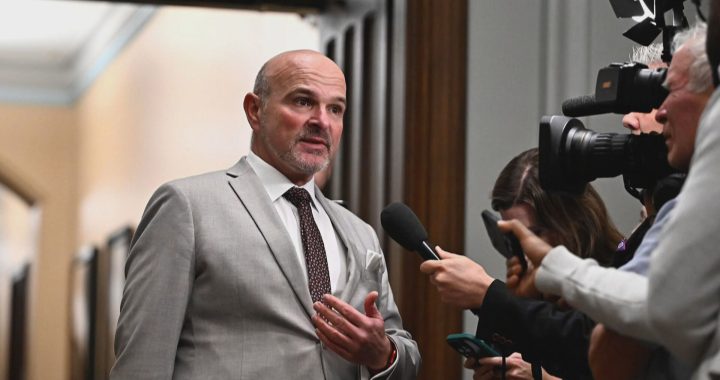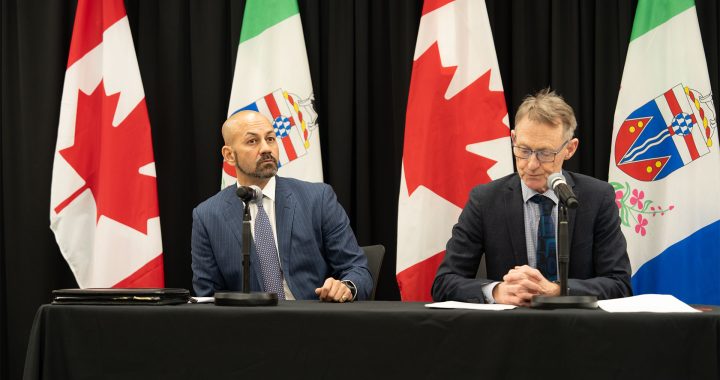
Many First Nations across the country used checkpoints and lockdowns to keep the novel coronavirus out of their communities as cases spiked elsewhere. Photo: APTN
With COVID-19 cases surging in several jurisdictions across Canada, the prime minister and public health officials are issuing stern warnings that the pandemic’s second wave could be far worse than the first – while some First Nations communities with new cases are already heading back into lockdowns.
“In our four biggest provinces, the second wave isn’t just starting, it’s already underway,” Justin Trudeau said Wednesday evening in a rare television address to the nation.
“We’re on the brink of a fall that could be much worse than the spring.”
The second wave of the virus has hit First Nations too, though overall numbers are relatively low.
There are currently 121 active cases on reserves out of 631 total with 11 deaths, according to the latest data from Indigenous Services.
Remote northern Ontario First Nations have recently reported cases.
Moose Cree First Nation on the James Bay Coast reported it’s first case on Sept. 12. The community confirmed its third case this week.
A Sept. 21 statement from Chief Mervin Cheechoo said an emergency operations team would meet to decide if additional safety precautions are necessary. For now, local health officials urged familiar health protocols such as hand-washing, staying home, wearing a mask and physical distancing.
Nearby Fort Albany First Nation entered a two-leek lockdown after COVID-19 entered the region.
Meanwhile, Kasabonika Lake First Nation is dealing six confirmed positives of the novel coronavirus. Pikangikum First Nation is dealing with one case and so is Sandy Lake First Nation.
Sandy Lake immediately instituted a community-wide lockdown which has since been loosened slightly.
Pikangikum Chief Dean Owen said in a community update that investigation into the method of transmission was underway.
Ontario reported 409 new cases and one new death due to the virus on Thursday. The province has had 48,496 cases total with 41,886 resolved and 2,836 deaths.
Daily new cases have tripled in the span of a month.
Canada’s top doctor Theresa Tam said Wednesday the country had seen an average of more than 1,100 new cases of the novel coronavirus a day this past week compared with about 380 a day in mid-August.
“Canada is at a crossroads with the COVID-19 epidemic trajectory,” Tam said. “Unless public health and individual protective measures are strengthened and we work together to slow the spread of the virus, the situation is on track for a big resurgence in a number of provinces.”
Read More:
Feds stress caution over a second wave of COVID-19
Coronavirus making inroads with first cases in First Nations in Manitoba
British Columbia reported 91 new cases for a total of 8,395 with 1,376 active and a total of 227 deaths on Wednesday.
First Nations in the province have recently reported new cases of the virus as well.
Witset First Nation in northern B.C. reported three cases of the virus on Sept. 18. The community implemented an immediate 14-day lockdown following the diagnoses.
The coastal community of Bella Bella reported on Sept. 9 that someone tested positive. The community issued an immediate stay-at-home request and instituted an evening curfew.
The nearby community of Bella Coola had four confirmed cases as of Sept. 14, the Heiltsuk Tribal Council said in an update.
New cases in the Prairies, Maritimes and the North remained comparatively low as the largest provinces made up the bulk of new positives.
First Nations in Manitoba increased testing after Fisher River, Peguis and Jackhead First Nations reported their first cases earlier this month.
First Nations and Metis communities in Saskatchewan’s far northwestern region were particularly hard-hit during the pandemic’s first wave. Out of 349 total cases, the region only had one active case on Thursday.
The president of the Metis Nation in Saskatchewan tested positive for the virus on Sept. 18.
More than two dozen people had to self isolate after coming in contact with Glen McCallum after a meeting in a hotel at the Prince Albert National Park.
Federal officials announced Thursday that 28 organizations which serve off-reserve and urban Indigenous people in Saskatchewan received $6.1 million out of the $90 million that Ottawa has allocated specifically for urban or off-reserve organizations.
Throughout the first wave, the federal government set aside $2.2 billion to help First Nations, Metis and Inuit fight the pandemic.
Officials stressed that the Canada Emergency Response Benefit (CERB) and Canada Emergency Wage Subsidy (CEWS) were available to eligible Indigenous people as well.
– With files from The Canadian Press









